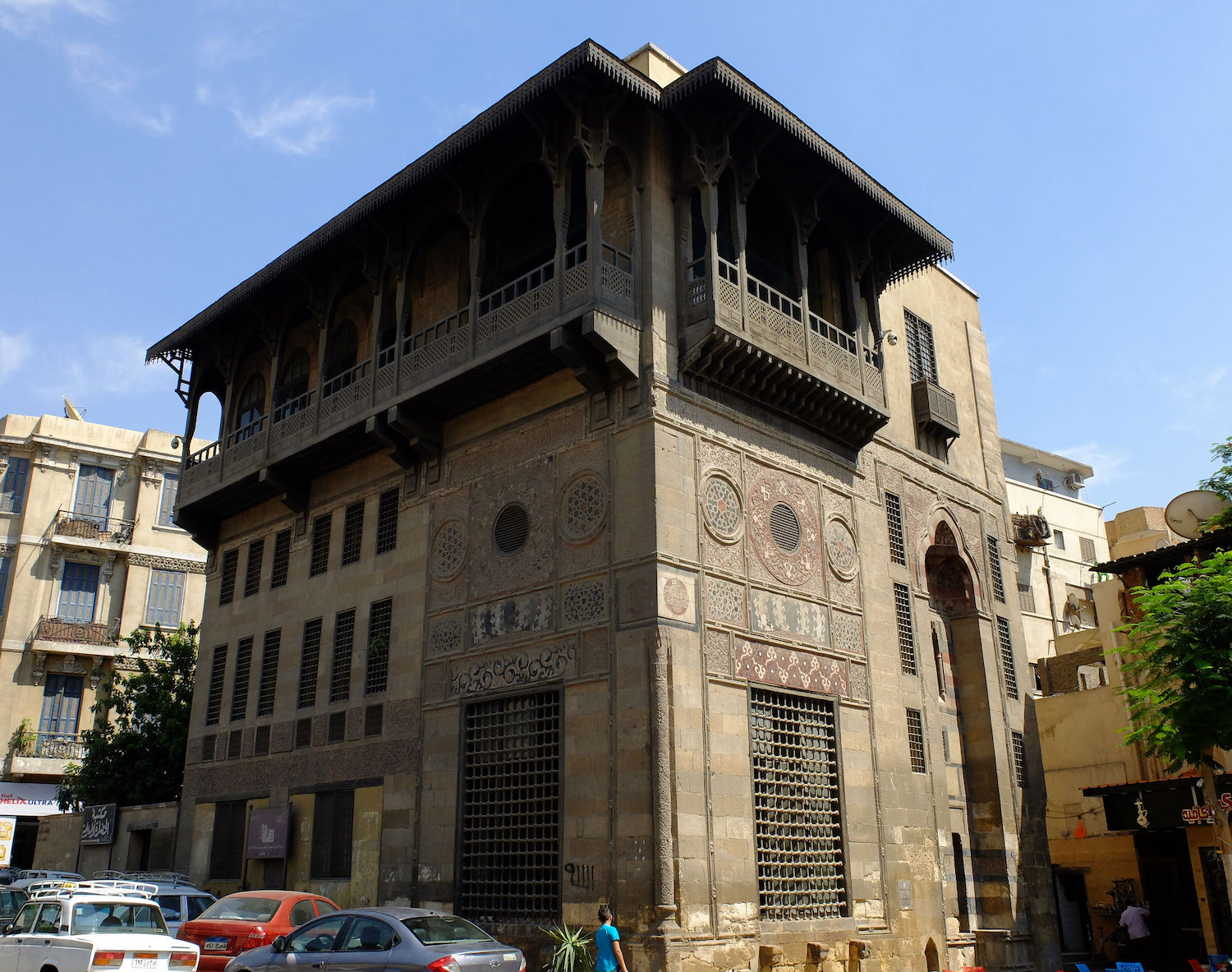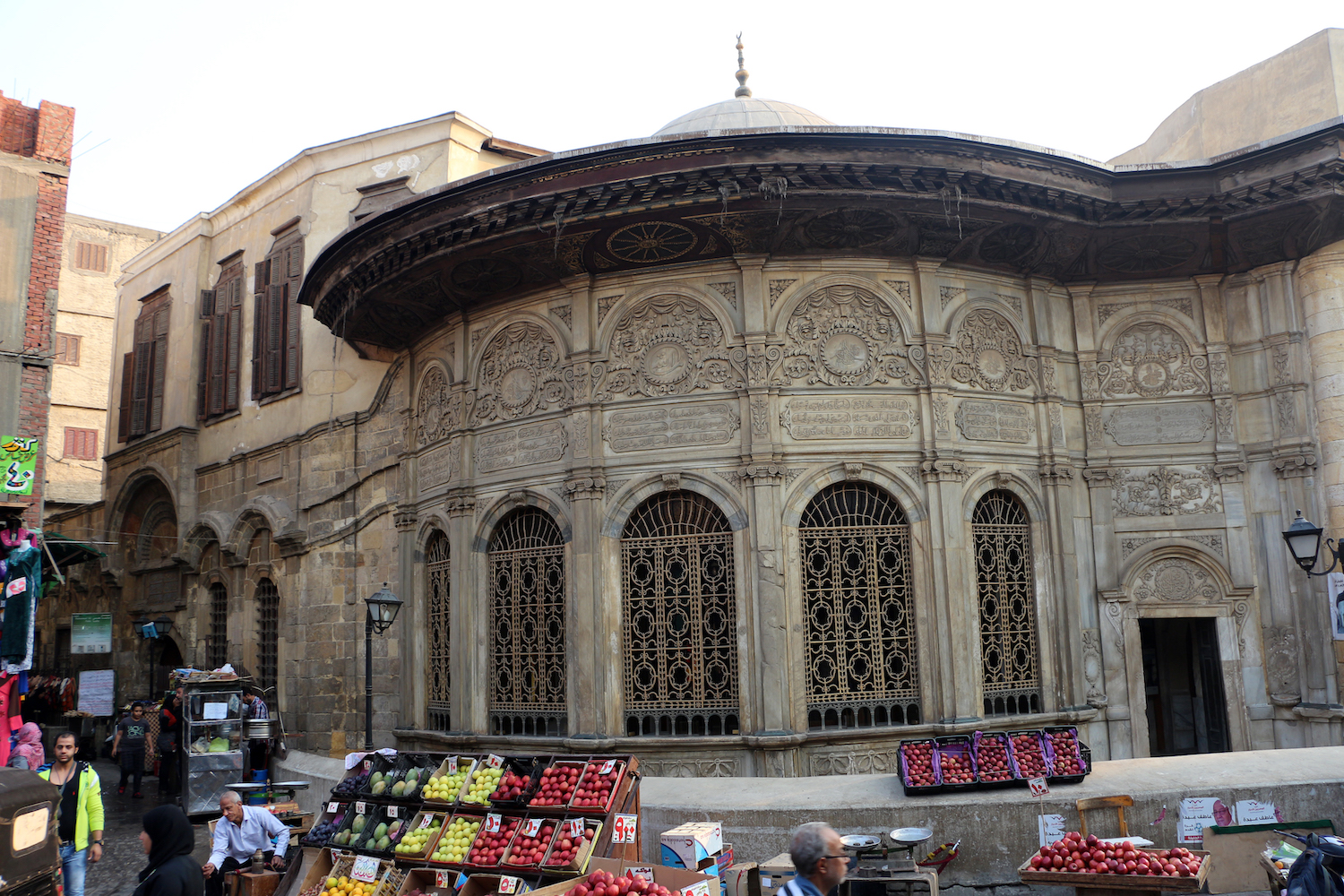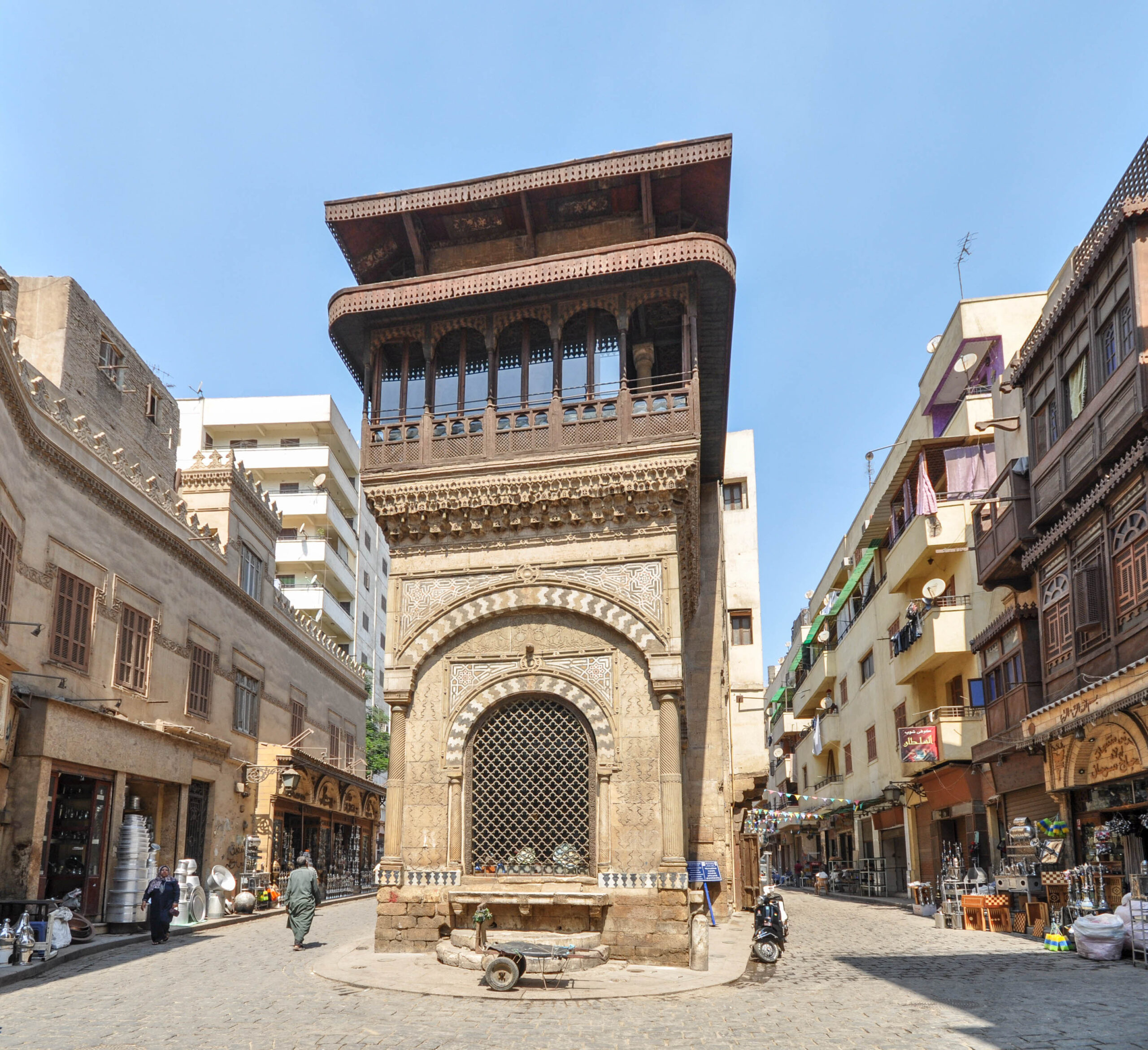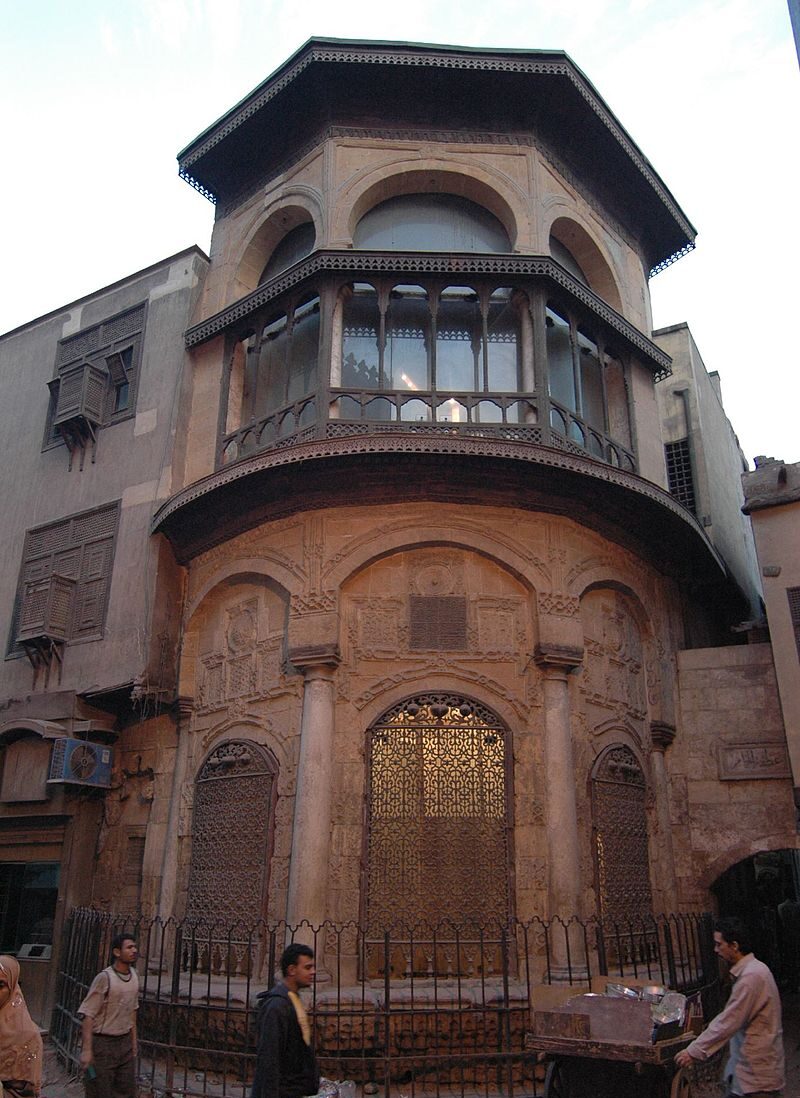From The Mamluk Era: 4 Historic Sabils in Cairo
architecture Egyptian history Islamic Cairo Mamluk sabil
Farah Fahim
Image via Le Progrès Egyptien
We often find buildings with peculiar architecture with “Sabil” written on them that are named after someone, usually in the Fatimid area of Cairo. A Sabil, or Sebil, is a small building with Islamic architecture where water is historically freely dispensed to the public, especially merchants and travellers. The term has often been used to refer to unnamed fountains with a tap for drinking water. You would commonly find them in Arab countries, especially Egypt, where the first Sabil was built during the Mamluk era. It is usually two stories high, with a well dug inside to collect rainwater and water from the Nile. The second floor is called “Hogret Al Tasbil” (or liquefaction chamber) to facilitate access to water for those passing through. When these Sabils became fully functional, they contained a place of rest for travelling merchants inside the building, some of which even contained books for memorising the Quran. Here are the four most significant Sebils in Egyptian history.
Sultan Qaitbay

Photography by Robert Prazeres
Built in 1479 by Sultan Abu Al-Nasr Sayf ad-Din Al-Ashraf Qaitbay, the Sabil is located on Saliba Street near Salah El-Din Square in the castle area. It was one of the most luxurious and artistic architectural designs at the time. It is three stories high and is the first Sabil with no home attached to it. Its third floor, however, includes a classroom for language instruction. The outside has exquisite art decorating it on all sides, with the first floor consisting of a rectangular room with a cistern in the ground. Above it, on the second floor, you can find the liquefaction chamber from which the water emerges, characterised by unique carvings on the stone and marble on the walls.
Mohamed Aly

Photography by Sailko
This Sabil was established by Mohamed Aly as a charity in memory of his son, Prince Ahmed Toson, in 1820, and it is considered among the most famous in Egypt due to its proximity to Al-Moez Street at the end of the Akkadin area. It consists of two floors – the first is to supply water, and the second is dedicated to teaching orphans. It is built in the Ottoman style and has an arched façade. It has five metal windows to present drinking water for passers-by, and the façade of the Sabil is decorated with marble artwork. The decoration is Baroque and Rococo and includes some verses of poetry in Ottoman Turkish.
Kethüda

Photography by Jorge Láscar
The Sabil of Abd al-Rahman Kethüda, one of the leaders of the Ottoman army in Egypt, was built in 1744 and is the most famous among all the Sabils in Egypt as it’s located in the iconic Al-Moez Street. It was constructed with a mixture of Mamluk and Ottoman architecture and consists of a rectangular room with three façades, each with a copper window with marble slabs dedicated to providing water to passers-by. The inside walls of the Sabil are covered with decorative “faience” tiles and are decorated with Quranic verses. The second floor is dedicated to teaching the Quran and Hadith.
Nafisa Al Baydaa’

Image via Facebook
This historic Sabil is located in the Ghureya area near Bab Zuweila. Named after one of Egypt’s highly esteemed ladies, Nafisa Khatun (not to be confused with Sayyeda Nafisa of the Holy Family or Ahl Al Bayt), born in 1743, came to Egypt as a Circassian slave under Ottoman rule and married Aly Beik Al Kabir. Nafisa Khatun was known for her charity work, and her most famous contribution has to be the Sabil and Kuttab built in her name. This Sabil is shaped like a semi-circle, attached to a building, and has three windows. These windows are decorated with flower-shaped metalwork to symbolise a mother’s care and giving nature, in the same way the Sabil offers passers-by to drink.
recommended
 Restaurants
Restaurants
Cairo's Ramen Revival: 5 Must-Try Bowls Around the City
Asian Food Asian Restaurants Cafés
Cafés



